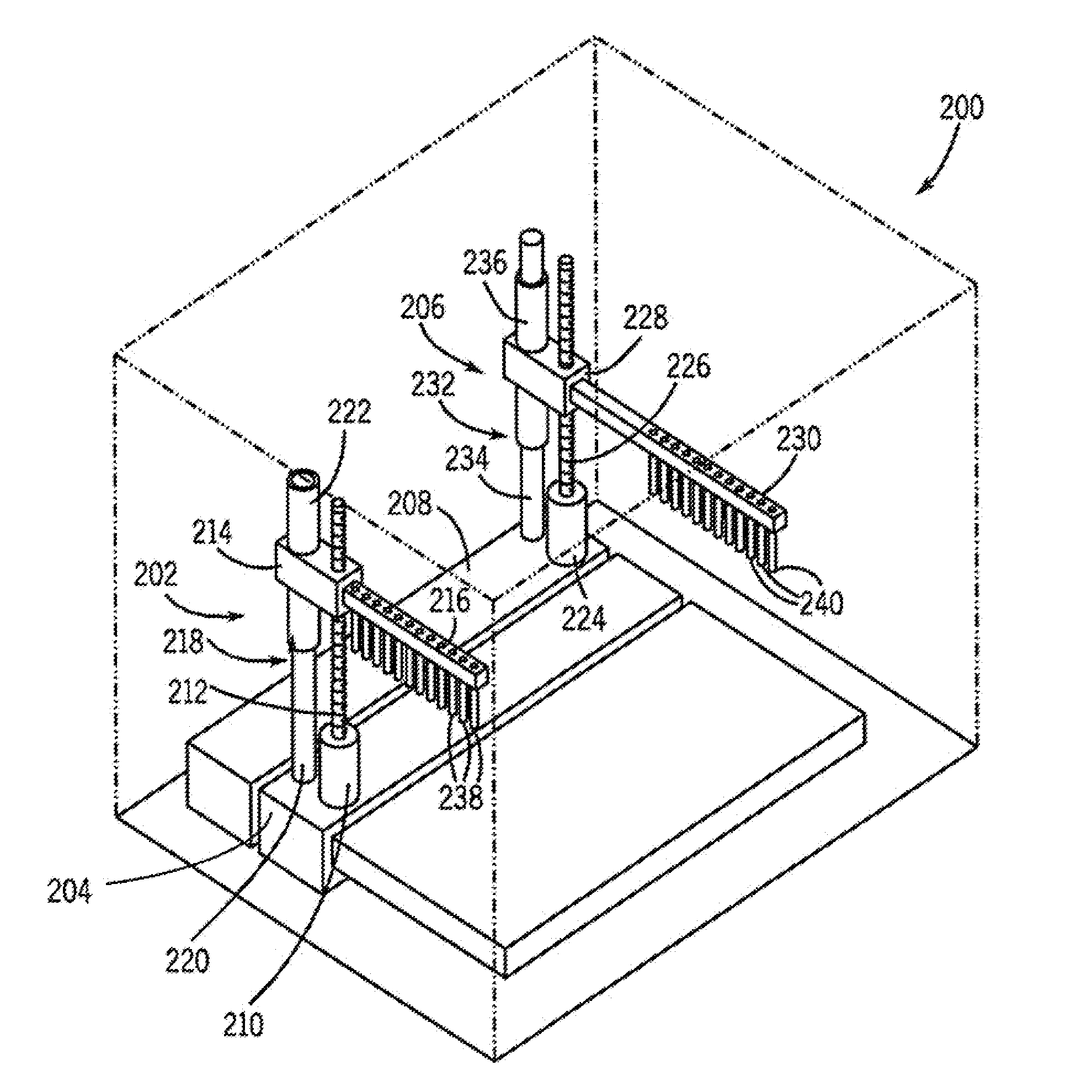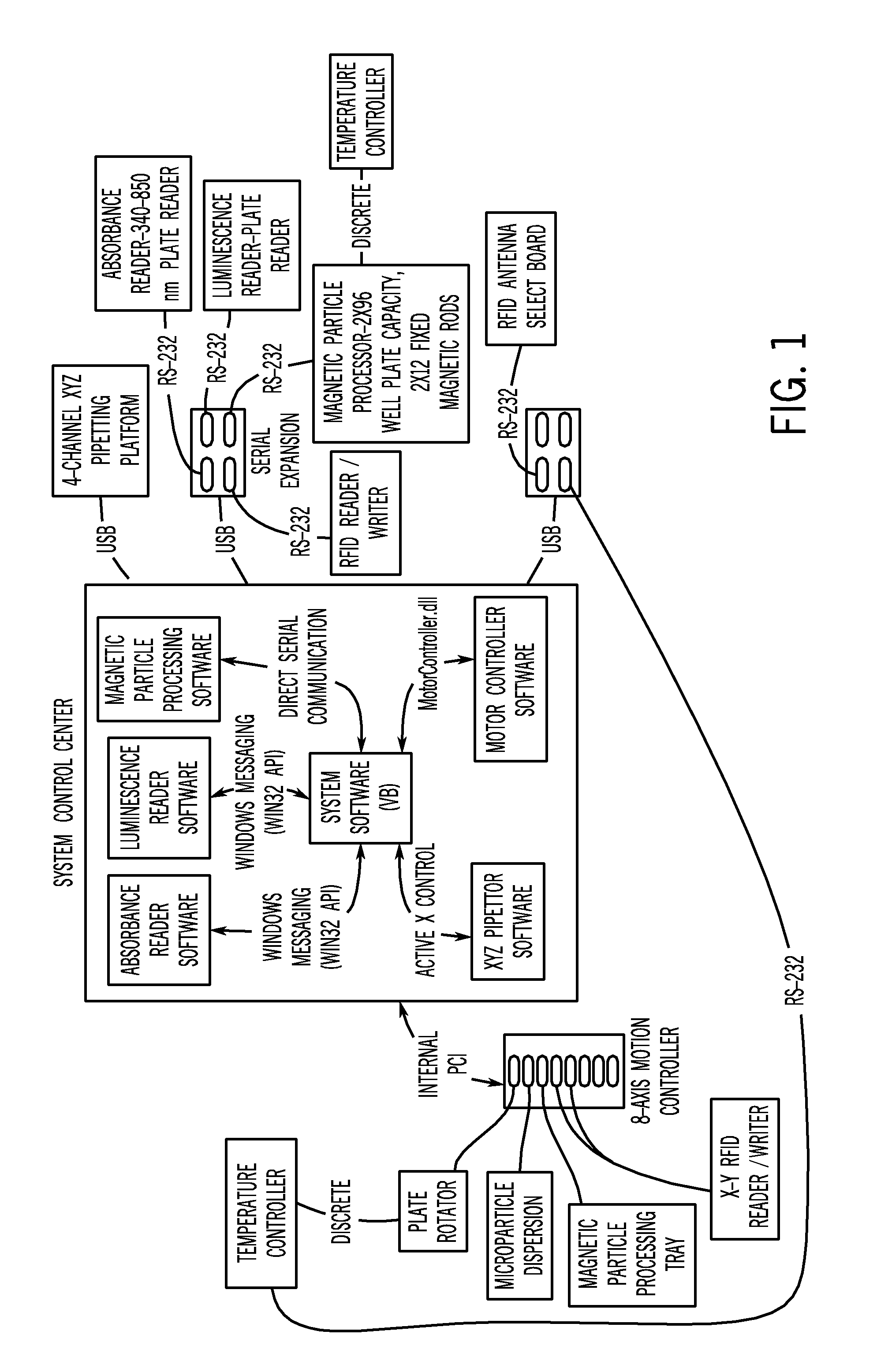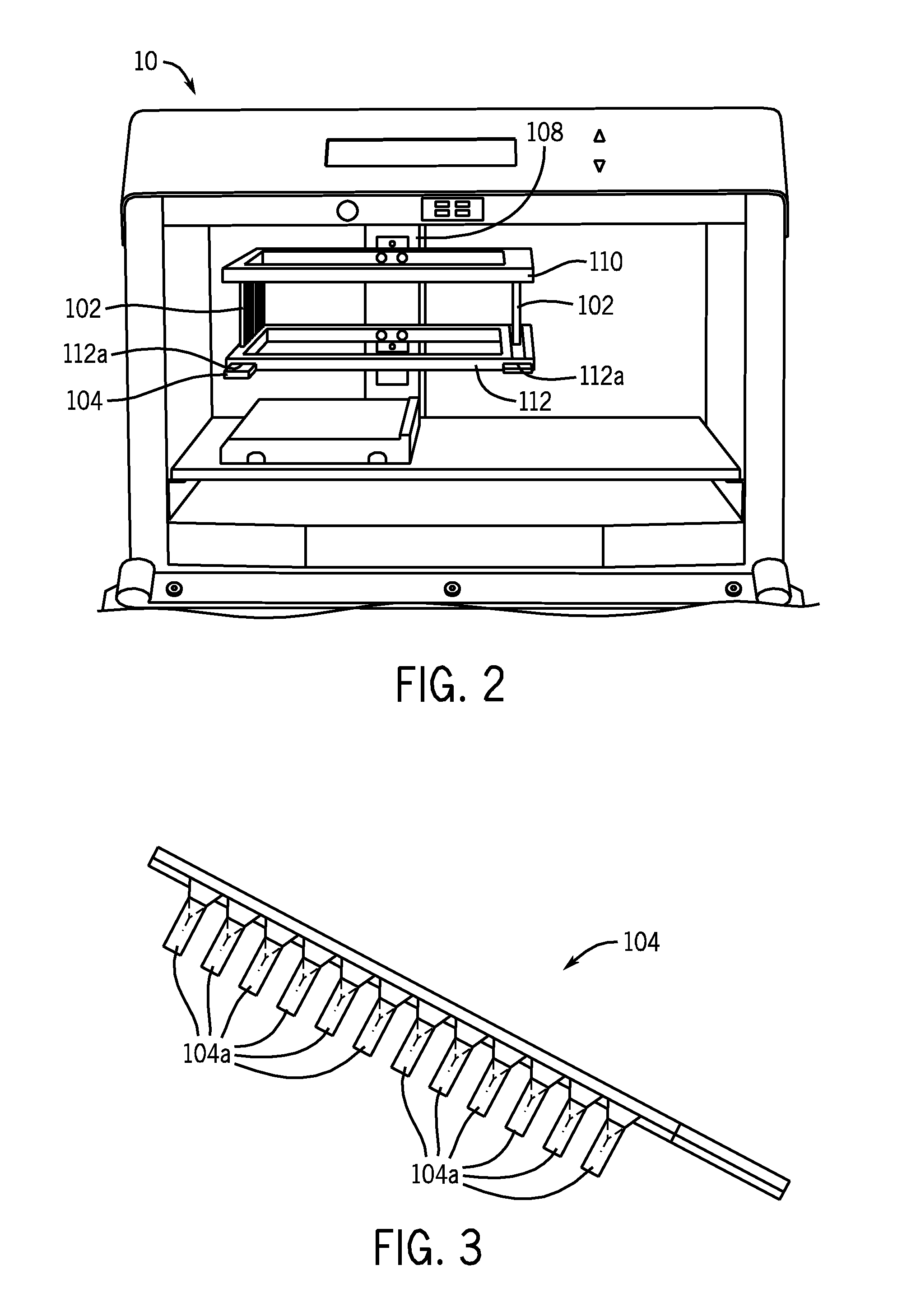System for processing magnetic particles
a magnetic particle and processing system technology, applied in the field of magnetic particle processing, can solve the problems of large volume of liquid waste generation, high cost, and high maintenance cost of the above-mentioned automated analyzer, and achieve the effects of less complex, less complex, and small volum
- Summary
- Abstract
- Description
- Claims
- Application Information
AI Technical Summary
Benefits of technology
Problems solved by technology
Method used
Image
Examples
Embodiment Construction
[0031]As used herein, the term “immunoassay” means a biochemical test that measures the concentration of a substance in a biological liquid, typically serum, using the reaction of an antibody or antibodies to its (their) antigen. An immunoassay takes advantage of the specific binding of an antibody to its antigen. As used herein, a “chemiluminescent microparticle immunoassay”, alternatively referred to as “chemiluminescent magnetic immunoassay”, involves a chemiluminescent label conjugated to the antibody or the antigen. In this assay, a magnetic microparticle is coated with antibodies. The assay is intended to look for antigens in the sample. A second antibody is labeled with a chemiluminescent label. This second antibody is not attached to a magnetic microparticle. The antibody and antigen with attach in the following order: antibody on magnetic microparticle-antigen-antibody-chemiluminescent label. The magnetic microparticle is then washed off. The amount of antibody-antigen-enzy...
PUM
| Property | Measurement | Unit |
|---|---|---|
| temperature | aaaaa | aaaaa |
| velocity | aaaaa | aaaaa |
| mixing assembly | aaaaa | aaaaa |
Abstract
Description
Claims
Application Information
 Login to View More
Login to View More - R&D
- Intellectual Property
- Life Sciences
- Materials
- Tech Scout
- Unparalleled Data Quality
- Higher Quality Content
- 60% Fewer Hallucinations
Browse by: Latest US Patents, China's latest patents, Technical Efficacy Thesaurus, Application Domain, Technology Topic, Popular Technical Reports.
© 2025 PatSnap. All rights reserved.Legal|Privacy policy|Modern Slavery Act Transparency Statement|Sitemap|About US| Contact US: help@patsnap.com



